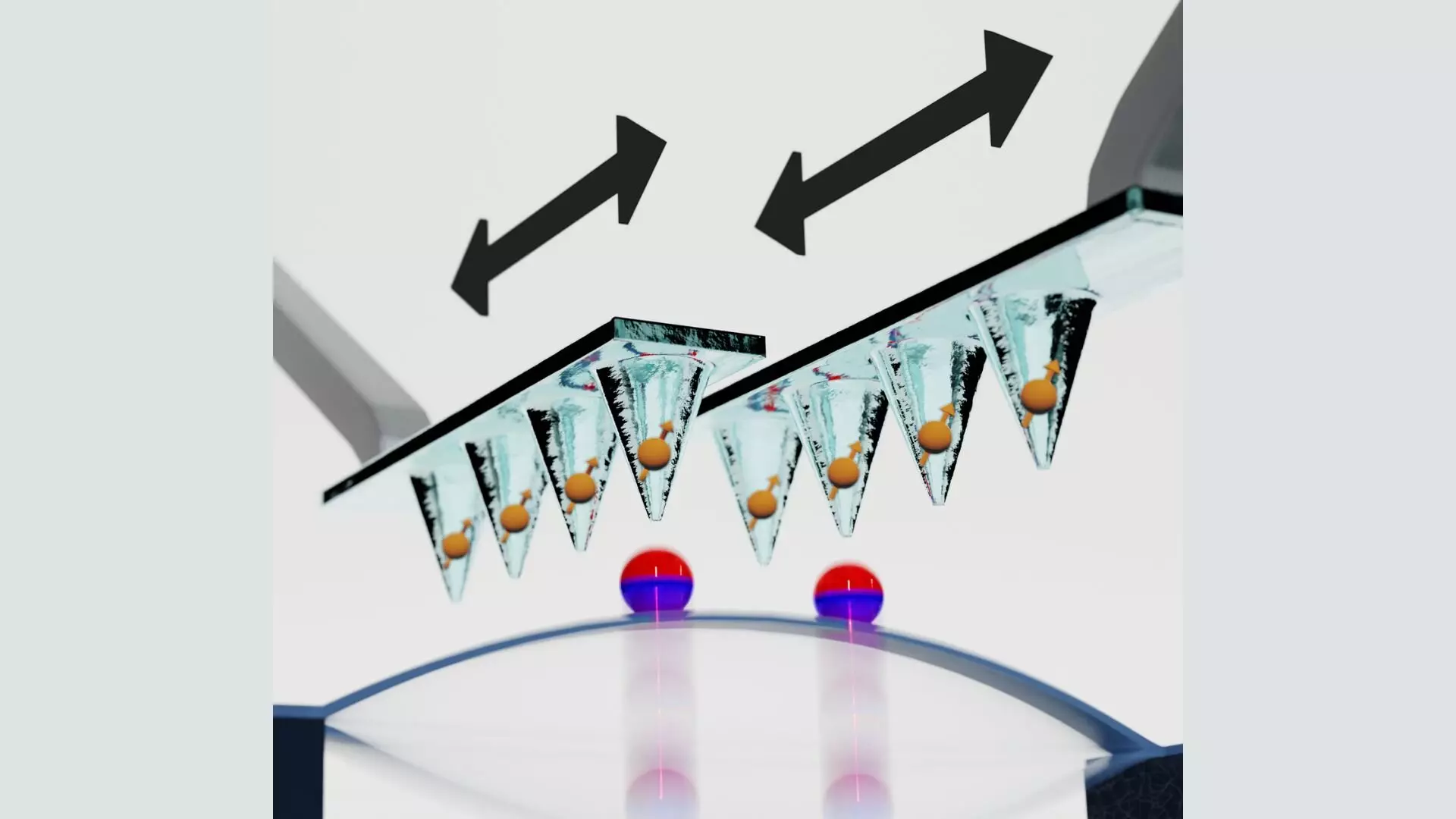In recent years, the quest for powerful and scalable quantum information systems has gained unprecedented momentum. Researchers are racing to develop qubits—quantum bits that serve as the fundamental building blocks of quantum computing. Among various candidates, solid-state spin qubits stand out due to their long coherence times, which indicate their stability and reliable operation in quantum applications. However, a glaring obstacle remains: the scalability of these systems. A recent study published in *Physical Review Letters* presents a compelling strategy to overcome this limitation by combining solid-state spin qubits with nanomechanical resonators, significantly enhancing the prospects for future quantum systems.
The Quest for Coherence and Control
In quantum computing, coherence time measures how long a qubit can maintain its quantum state, which is critical for effective information processing. Solid-state spin qubits, particularly those utilizing nitrogen-vacancy (NV) centers in diamonds, have shown promising long coherence times, making them suitable candidates for qubit architecture. However, while small arrays of spin qubits have been constructed, they face inherent limitations regarding interaction range and scalability. As noted by Frankie Fung, a lead researcher in the study from Harvard University, the reliance on magnetic dipolar interactions limits the range of coherence between qubits, confining them to tens of nanometers. The challenge then becomes how to control increasingly large arrays of qubits while ensuring robust and stable interactions.
Bridging Interaction Gaps with Nanomechanical Resonators
The innovative proposal from Fung and his team aims to transcend the reach of conventional qubit interactions by introducing nanomechanical resonators as intermediaries. Picture nanomechanical resonators as tiny oscillating structures capable of high-frequency vibrations, uniquely positioned to mediate interactions between qubits over larger distances. The researchers propose coupling these resonators with NV centers in diamonds, facilitating a new tier of non-local qubit interactions crucial for programmable quantum systems.
As the research outlines, the architecture incorporates individual scanning probe tips positioned over a mechanical resonator to allow for varied qubit connectivity. This configuration opens the door to a programmable quantum system, where precise mechanical movements can dynamically alter qubit interactions. This envisioned system represents a shift from localized dipolar interactions to broader capabilities that harness the unique advantages of both mechanical and quantum properties.
The Diamonds in the Details: NV Centers
Nitrogen-vacancy centers serve as crucial components in this advanced quantum architecture. Embedded within diamond structures, these centers arise from substituting carbon atoms with nitrogen and creating vacancies that lead to unpaired electron spins, which act as qubits. Their optical compatibility allows for easy information input and output, thereby enabling communication between qubits through laser excitation. Furthermore, the unique magnetic sensitivity of NV centers bolsters their functionality as robust qubits, despite the challenges posed by short-range interactions.
The proposed setup leverages a micromagnet on a silicon nitride nanobeam to create the magnetic field essential for manipulating electron spin states. This innovation offers the tantalizing ability to control multiple qubits across a larger field gradient without succumbing to the pitfalls of traditional systems, thereby enhancing the overall processing capacity of quantum systems.
Advancing the Proof of Concept
To validate their architecture, Fung and his collaborators conducted experiments demonstrating coherent transport of qubit states over considerable distances. Their results showed that qubits could maintain their coherence even while undergoing transitions, as highlighted by their measured quality factor of around one million, indicative of a highly efficient system. Despite needing improvements compared to the current benchmark of ten billion, these findings highlight the potential of their hybrid architecture in developing practical and scalable quantum computing systems.
Future enhancements are on the horizon, including the introduction of optical cavities that can refine measurements of mechanical motion while also preparing resonators in their ground states. This could enable advanced experiments in quantum information transfer, bridging the gap between spin qubits and mechanical systems.
Realizing the Vision: The Hybrid Quantum System
As the boundaries of quantum computing continue to expand, the integration of nanomechanical resonators offers a remarkable pathway to interconnect different types of qubits, leveraging their respective strengths while mitigating weaknesses. Fung’s research exemplifies a strategic approach towards creating hybrid quantum systems that can fundamentally advance the field.
The route paved by this innovative architecture showcases the potential for developing large-scale, programmable quantum processors that bridge gaps between existing technologies and future capabilities in quantum computing. As research progresses, a transformative shift in the landscape of quantum information processing may not only be possible but could soon become a reality. This realization promises a vibrant future for quantum technologies, fundamentally altering how we approach computing and information exchange in the years to come.


Leave a Reply